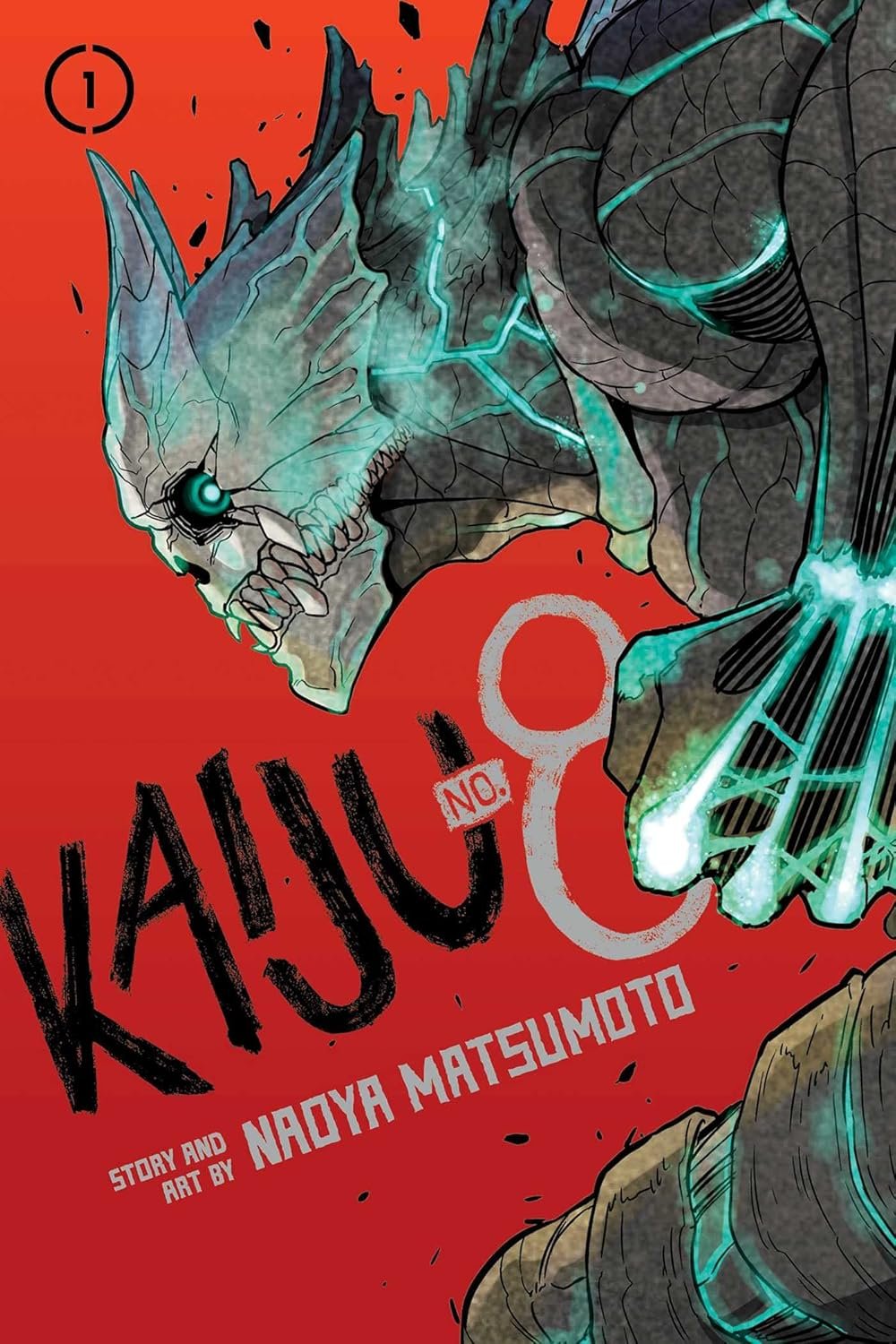Kaiju No. 8: A Monster-Sized Hit
/Story and Art by Naoya Matsumoto
Who said you’re too old to be a hero? That’s the question mangaka Naoya Matsumoto decided to answer when he published his science fiction manga Kaiju No. 8 in 2020, starring 32-year-old protagonist, Kafka Hibino.
Thank Goodness He’s Not a Kid!
A tale (almost) as old as time, shonen protagonists have classically been 15-year-old boys with only a few exceptions here and there. The most common trope in shonen anime/manga is a teenaged boy awakens latent powers and has to save the world from enemies that get tougher the further along they get in their journey. Example: Ichigo Kurosaki. He began his journey at 15 and fought stronger and stronger enemies as Bleach went on. But not Kafka Hibino.
Kafka Hibino Crashes Onto the Scene
anime produced by Production I.G.
The story follows Kafka Hibino, a 32-year-old man who helped clean up the leftover bodies of defeated kaiju, giant monsters that cause disasters.
For years, Kafka dreamed of joining the Anti-Kaiju Defense Force, a highly esteemed and powerful organisation tasked with eliminating kaijus. However, after failing the entrance exam over and over again for years, he gave up on joining the Defense Force when he aged out. Then, one day, a young man named Reno Ichikawa gave him hope, telling him the Defense Force had raised the age limit.
After saving Reno from a kaiju and being hospitalised, Kafka came face to face with a mysterious little kaiju. The kaiju forced its way into Kafka’s body and transformed him into Kaiju no. 8. Despite the drastic transformation, he continued to try and join the Defense Force, all while hiding his new kaiju form from the people sworn to eliminate a creature like him.
It's Got Everything I Ever Wanted
Kafka hibino in chapter 7
For so long I was tired of seeing kids being thrown into situations where they shouldn’t be. I wanted something new. Something fresh. Well, I got my wish, and I cannot describe how happy I was when I first started reading Kaiju No. 8 and discovered Kafka wasn’t going to be your typical manga protagonist. He isn’t an inexperienced teenaged kid with latent powers being thrown into life-or-death situations. He’s an adult.
To my delight, Kafka wasn’t the only amazing character in the series. All the side characters are fun, unique, and special in their own way. There are a few teenagers in the Defense Force, but only a handful are younger than eighteen. To me, that’s a much more acceptable age than fifteen for side characters in a shonen.
However, there are also a lot of adults in the story. The captain of the Kaiju Defense Force division Kafka joins is a 27-year-old woman named Mina Ashiro. She’s Kafka’s childhood friend who inspired him to keep fighting for his dream even when things got hard.
It's not just the protagonist and his friends that make the story so amazing. Even though the animation is different from the art in the manga (as is to be expected), the action is nonetheless just as epic across both versions. I’ll be honest, I think the anime handles the action better than the manga, but that’s only because I can see the characters moving around and there’s music, colour, and sound effects. Nevertheless, both are definitely worth the experience.
On another note, the anime brought me my most listened to song of the year. The opening, Abyss by YUNGBLUD, has been on repeat for me since June, and it’s December! I’ve also watched the entire show twice in the past six months because I liked it so much.
It’s More Than Worth It
kafka hibino in episode 5
Naoya Matsumoto’s Kaiju No. 8 was the most refreshing sci-fi shonen manga/anime I’ve encountered in a long time. I’ve seen too many anime to count and have read even more manga, and this one really stood out to me. It’s funny, action-packed, has excellent characters, a great story, and the anime has a killer soundtrack!
All in all, Kaiju No. 8 is an anime and manga well worth your time with an inspiring message to everyone. It’s never too late to chase your dreams. I think that no other protagonist in modern anime better embodies that idea than Kafka Hibino, who picked himself back up and continued to follow his dreams, even if it meant putting himself in danger to protect those he cares about.
So, head out there and see for yourself why Kaiju No. 8 is so amazing. Don’t just take my word for it.
Jessica Eyre lives with her family and three cats in Ottawa. She spends her time writing, drawing, reading, watching anime and movies, playing video games, and generally avoiding people. She prefers to spend her time cuddling with her cats while writing her next story or getting lost in another book. With ten years of writing as a hobby under her belt and being on the Dean’s List two semesters in a row in Professional Writing from Algonquin College, she has plenty of experience in the writing world. She’s no stranger to words. They’re her first love and greatest passion – aside from cats of course.











